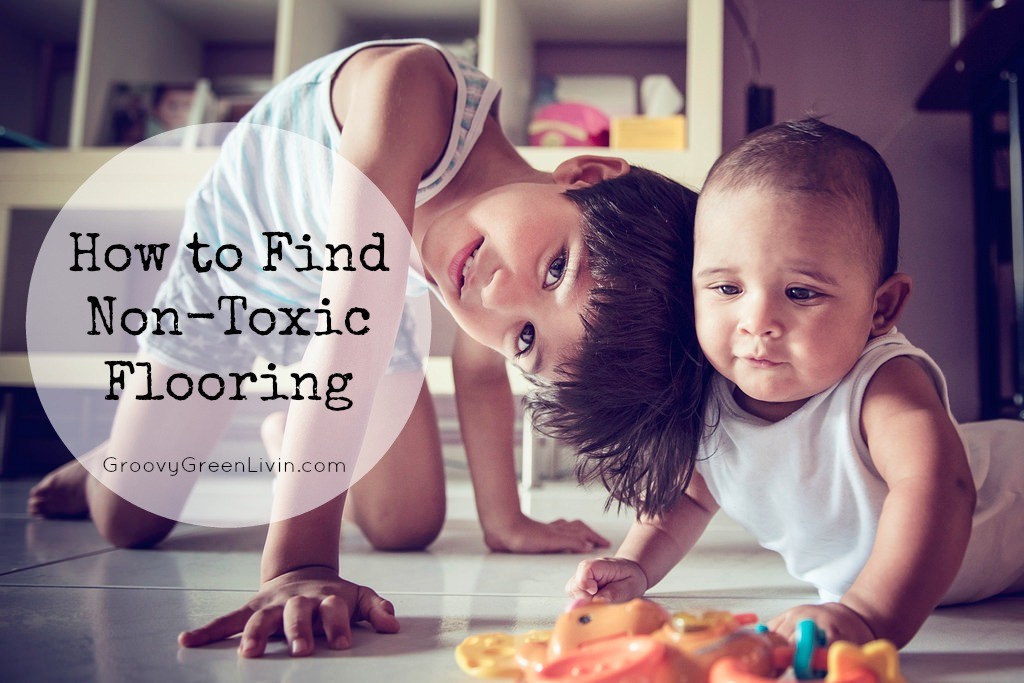This was originally published at Moms Clean Air Force [2]
Choosing non-toxic flooring for your home might sound like a simple task, but unfortunately, many of the flooring options available contain harmful chemicals. Toxic chemicals in flooring can be a significant source of indoor air pollution. Air pollution is now the world’s largest single environmental health risk according toestimates [3]. In 2012, around 7 million people died, one in eight [4] of total global deaths, as a result of air pollution. 4.3 million of those deaths were attributable to indoor air pollution.
If you are in the process of choosing new or replacement flooring, it’s important to understand how each option could impact the indoor air quality of your home.
Carpeting
While carpeting has been a popular choice, we now know new carpet installation is a large contributor to indoor air pollution [5]. Carpeting can fill household air with volatile organic compounds [6] (VOCs), including probable carcinogens like formaldehyde, benzene and stain repellents. There are a few safer carpet options [5] available, but there are also alternatives to carpet including tile, hardwood, linoleum and vinyl.
Ceramic Tile
Ceramic tile is generally a safe, non-toxic option that is easy to maintain. It’s important to ask the distributor and installer specific questions about the safety of the grout, the ventilation process used during installation and any other materials used that could cause toxic fumes.
Hardwood
For anyone with allergies, hardwood is typically a good option. The wood surface allows for dust and other allergens to be removed easily. True hardwood is made from solid wood harvested from trees. It’s important to choose a non-toxic finish when installing new flooring. Hardwood is not to be confused with laminate, which was called out in a 60 Minutes story [7] back in March 2015. Laminate flooring is a synthetic product made to look like real wood. The flooring giant, Lumber Liquidators [8], was accused of selling illegally sourced laminate wood with high levels of formaldehyde, a known carcinogen.
Vinyl and Linoleum
Many consumers are opting for vinyl or linoleum because they are durable, versatile and economical options. Vinyl and linoleum are sometimes used interchangeably, but they are very different types of flooring.
Linoleum flooring is made from all-natural and biodegradable materials including linseed oil, cork dust, pine resin and wood flour. It is very resilient and can last up to 30-40 years [9]. Vinyl on the other hand is a petroleum-based synthetic product, made from polyvinyl chloride (PVC) [10] resin along with additives, such as plasticizers, stabilizers, pigments, and fillers. Vinyl flooring can last anywhere from 10 to 20 years.
Why is vinyl flooring hazardous?
A recent study found [11] that most vinyl flooring, made from reprocessed plastic, contained toxic phthalates, [12] lead, cadmium, brominated flame retardants, and other toxic chemicals. These chemicals can contribute to indoor air pollution by drifting out of the vinyl and into the air and dust inside homes. There’s some good news for consumers: major retailers including Lumber Liquidators [13], Home Depot [14], Menards and Lowe’s [15] are all taking steps to remove toxic phthalates [16] from their vinyl flooring.
What to look for when purchasing flooring
- Instead of carpet, chose hard-surfaced flooring and rugs that can be removed and cleaned outside.
- Look for non-toxic and eco-friendly options. Ask questions of manufacturers and installers regarding materials used, safety and environmental claims [17].
- Decline any stain-resistance treatments.
- Look for products made without vinyl such as hardwood, linoleum and ceramic tile.
For the health of our families, please continue to support meaningful legislation that prevents these chemicals from ending up in our homes.
What type of flooring do you have in your apartment or home?
FOR MORE INFO: PLEASE CHECK OUT CLIMATE CHANGE AT HOME [18].
TELL YOUR SENATORS: GET THE JOB DONE ON TOXIC CHEMICAL REFORM [19]
P.S. If you liked this post you might enjoy our Groovy Green Livin Newsletter [20]. Receive new posts and special opportunities delivered right to your inbox! Sign up HERE [20].
